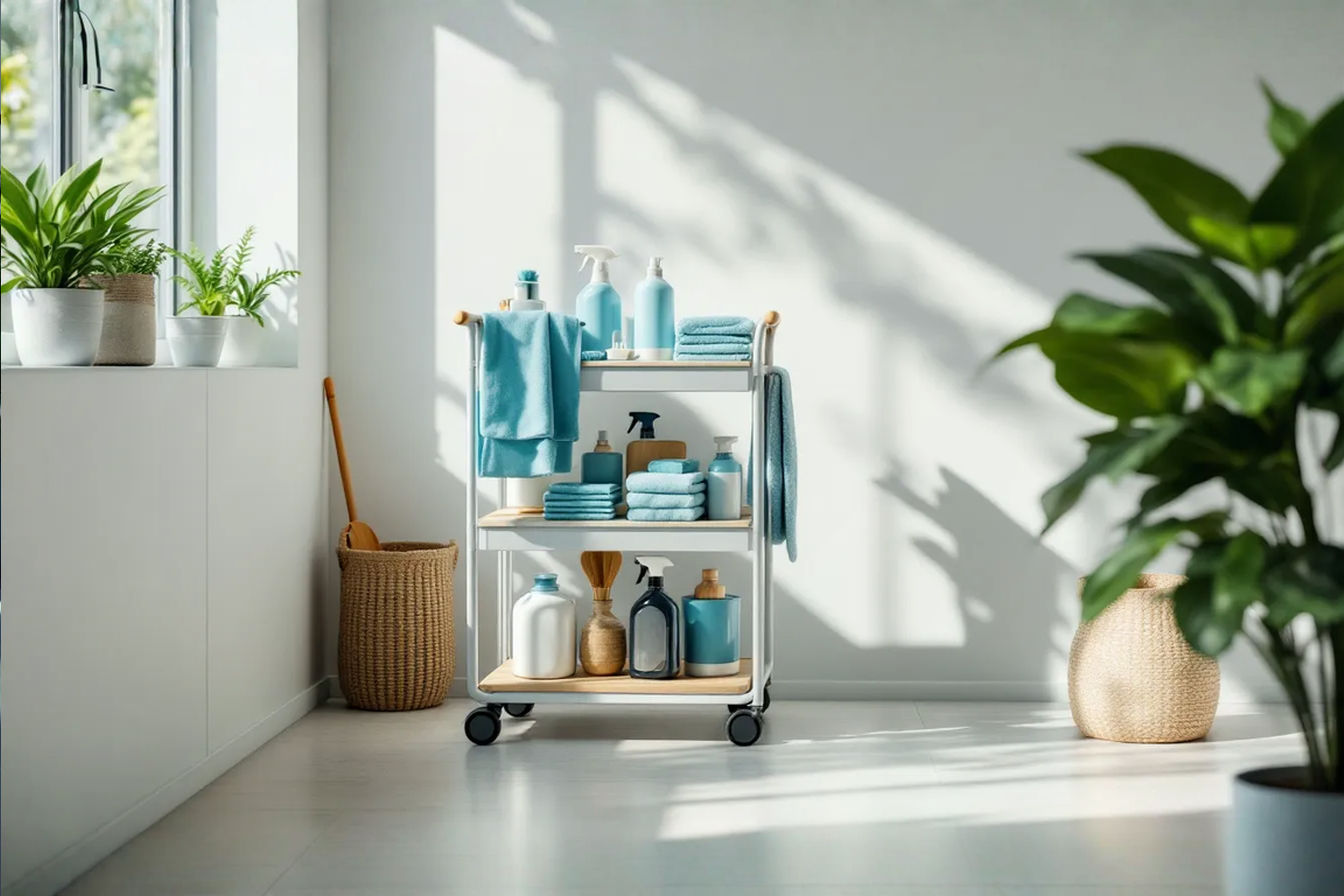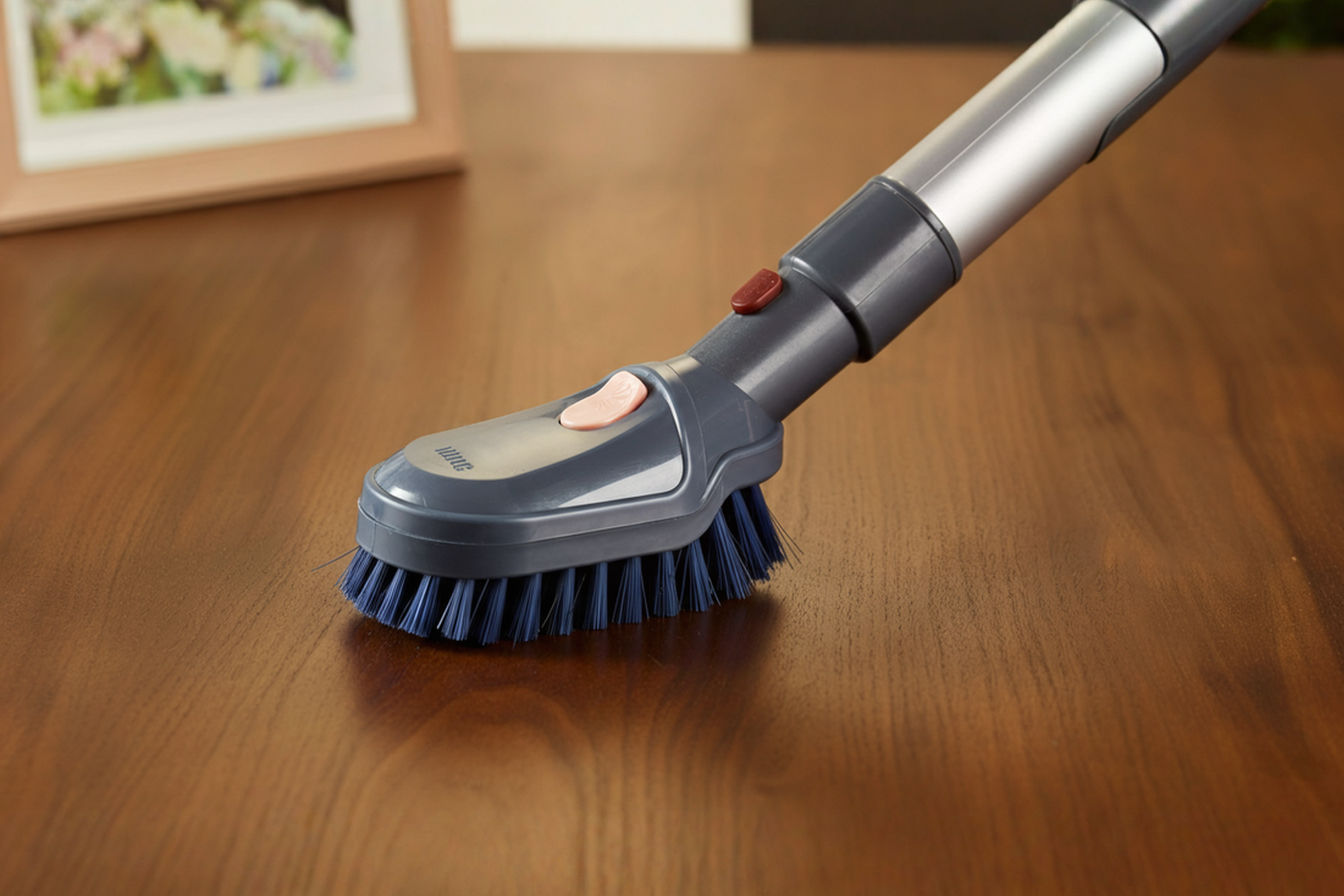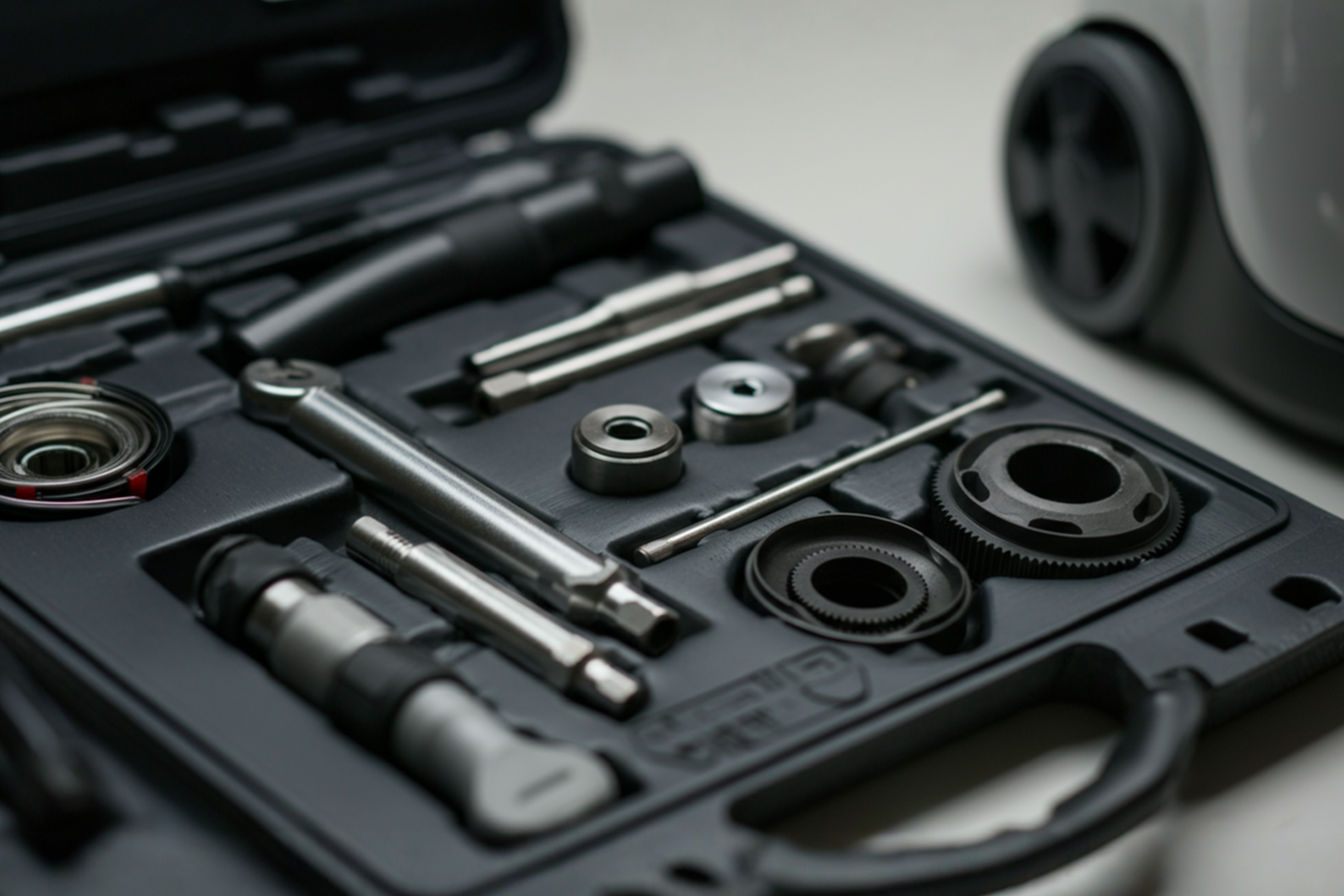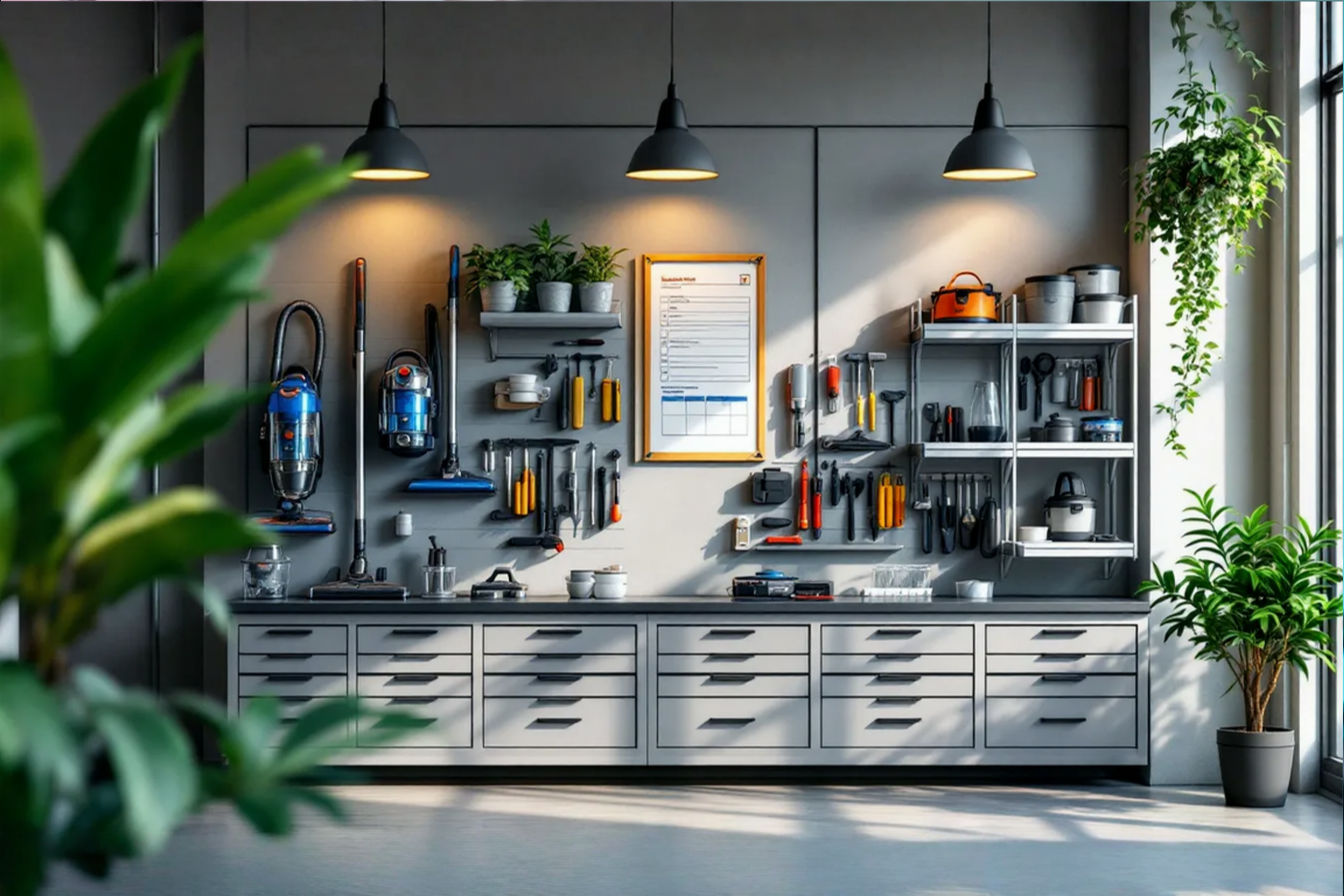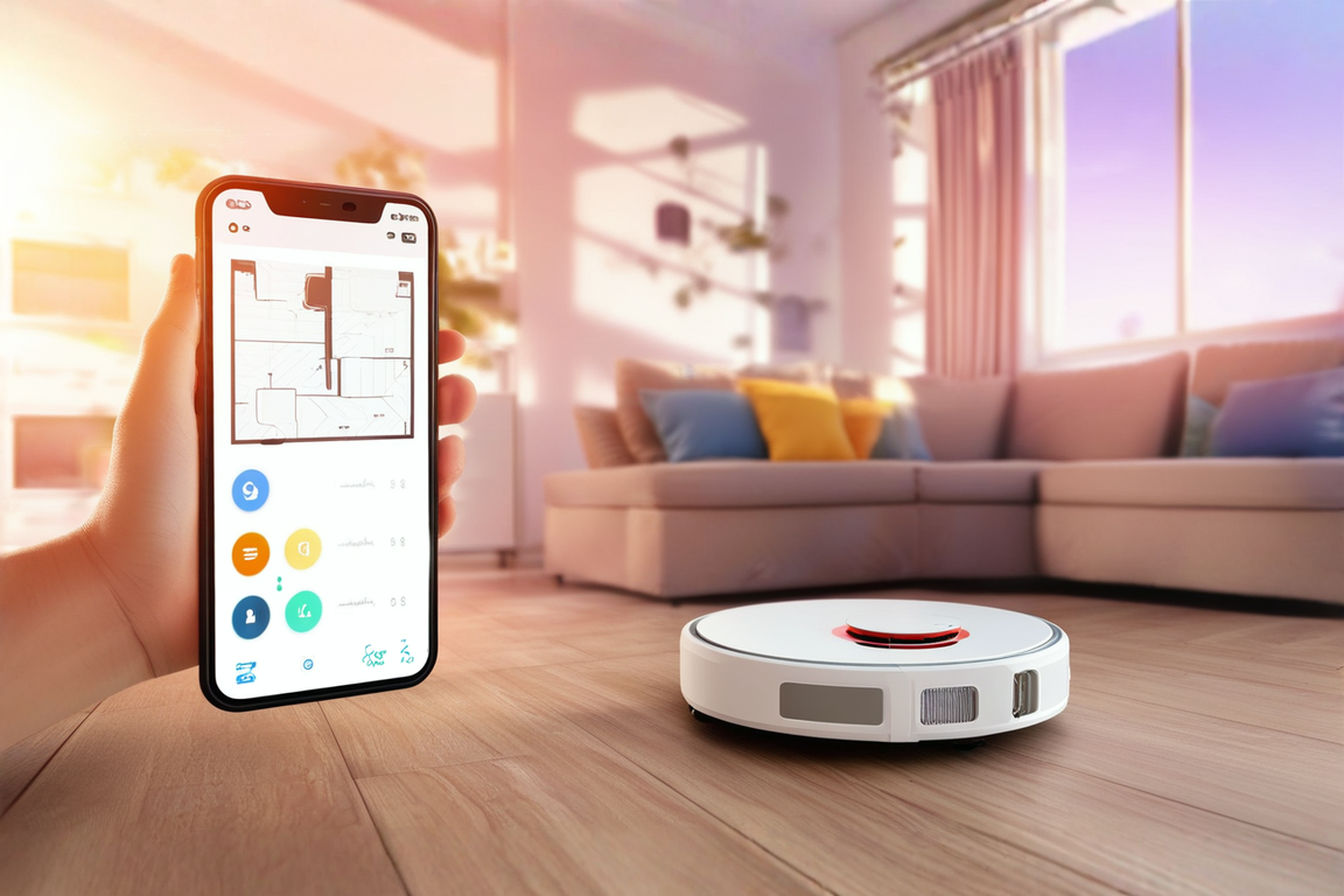Janitorial Cart Concepts for Home Use: Creating a Mobile Cleaning Station
Discover how professional cleaning techniques can revolutionize your home maintenance with a mobile cleaning station that saves time and eliminates the frustration of disorganized supplies.
This post may contain affiliate links. If you make a purchase through these links, we may earn a commission at no additional cost to you.
Cleaning your home often feels like an endless battle against disorder and dirt. You start in one room, only to realize you’ve left the glass cleaner downstairs or the dusting cloth in another bedroom. These interruptions break your momentum and transform a simple cleaning session into a time-consuming chore. The solution to this common household frustration lies in a concept borrowed from professional cleaners: the janitorial cart.
Professional cleaners maintain impressive efficiency by having all necessary supplies within arm’s reach at all times. This approach isn’t just for commercial settings—it can revolutionize your home cleaning routine as well. A mobile cleaning station brings order to chaos, streamlines your process, and might even make cleaning slightly more enjoyable.
This comprehensive guide explores how to create, stock, and maintain a home janitorial cart system that suits your unique living space and cleaning needs. Whether you occupy a compact apartment or a multi-story house, implementing a mobile cleaning station will transform your approach to household maintenance. By the end, you’ll understand why professional cleaners prioritize organization and how this system can save you countless hours of cleaning frustration.
Benefits of a Mobile Cleaning Station
Creating a home janitorial cart delivers advantages that extend far beyond simple convenience. The transformation in your cleaning routine becomes apparent from the first use.
Time efficiency stands as the primary benefit of a mobile cleaning station. Rather than repeatedly hunting down supplies or making multiple trips to the storage closet, everything remains within reach. This consolidation can reduce cleaning time by up to 30% for most households, freeing your schedule for more enjoyable activities.
The psychological impact proves equally valuable. When cleaning supplies stay organized and accessible, you experience less mental resistance to starting cleaning tasks. The cart serves as a visual trigger that helps overcome cleaning procrastination—seeing your well-prepared station makes beginning the chore significantly easier.
A mobile cleaning system also promotes thorough cleaning practices. With all necessary tools at hand, you become more likely to address spots and areas you might otherwise skip when supplies require retrieval from another location. The resulting cleaning quality improves noticeably throughout your home.
Supply management improves dramatically with a centralized system. You’ll maintain better awareness of inventory levels, reducing instances of running out of essential products mid-cleaning. This awareness also helps prevent unnecessary duplicate purchases, saving money over time.
The mobility aspect cannot be overstated. Moving smoothly from room to room while maintaining cleaning momentum creates a more efficient workflow. This continuous progress helps maintain the motivation to complete the entire cleaning session rather than stopping prematurely due to frustration or fatigue.
Types of Home Cleaning Carts
The perfect cleaning cart for your home depends on your space, aesthetic preferences, and specific cleaning requirements. Several approaches provide effective solutions for different situations.
Commercial janitorial carts offer robust functionality but often require adaptation for home environments. These professional-grade options feature multiple compartments, tool holders, and waste collection systems. While designed for commercial settings, smaller versions can serve home needs effectively, particularly in larger houses. Their durability makes them suitable investments for households with intensive cleaning demands or multiple family members sharing cleaning responsibilities.
Repurposed furniture presents a more aesthetically pleasing alternative. Bar carts, kitchen utility carts, and rolling storage units can transform into sophisticated cleaning stations. These options blend functionality with home décor, making them particularly appropriate for open-concept homes where the cart might remain visible. A vintage bar cart repurposed as a cleaning station adds character while serving a practical purpose.
DIY solutions provide customized options for specific needs. Building a cart from plastic storage containers, pegboards, and caster wheels creates a personalized solution perfectly matched to your requirements. This approach allows modification as cleaning needs evolve and often proves more cost-effective than commercial alternatives.
Compact cleaning caddies serve apartments and smaller homes where space limitations preclude larger cart options. These portable carriers feature handles and compartments for essential supplies, though they necessarily carry less than full-sized carts. Their portability makes them ideal for navigating tight spaces or carrying up and down stairs in multi-level homes.
Multi-tier rolling storage solutions strike a balance between capacity and footprint. These vertical organizers maximize storage while minimizing floor space requirements. Available in various materials from metal to plastic, they adapt to different home aesthetics while providing substantial storage capacity for diverse cleaning supplies.
Essential Components for Your Home Janitorial Cart
Creating an effective mobile cleaning station requires thoughtful inclusion of key components that support efficient cleaning processes. Each element serves a specific function in the overall system.
Storage compartments form the foundation of any cleaning cart design. These spaces hold cleaning products, rags, scrub brushes, and other supplies in an organized manner. Look for adjustable compartments that accommodate different bottle sizes and shapes. Consider transparent containers that allow instant visual identification of contents to enhance efficiency during cleaning sessions.
Tool holders and hooks maintain accessibility for frequently used items like squeegees, dusters, and brushes. This vertical storage utilizes space efficiently while keeping tools from becoming damaged or tangled. Positioning these elements at the cart’s exterior ensures quick access without digging through other supplies.
Waste collection represents a critical but often overlooked component. Professional janitors never clean without a trash collection system, and your home cart should follow this principle. A small waste bin or bag holder lets you dispose of debris immediately rather than creating piles that require later attention. This practice significantly reduces backtracking during cleaning sessions.
Supply organization systems like divided caddies, small bins, and bottle organizers prevent items from tipping or spilling during cart movement. These organizational elements also support logical grouping of supplies by function or room type. Consider using antimicrobial mats in areas where damp tools or bottles will rest to prevent mildew development.
Mobility considerations directly impact usability across different home environments. Smooth-rolling, lockable casters provide controlled movement across various flooring types. For multi-level homes, consider lightweight designs with comfortable handles that facilitate carrying between floors. The cart’s height should allow comfortable access without unnecessary bending or reaching that might cause strain during extended cleaning sessions.
Organizing Your Cleaning Supplies
Effective organization transforms a collection of cleaning products into a functional system. Strategic arrangement of supplies on your cleaning cart enhances efficiency and reduces frustration during cleaning tasks.
Categorization by function creates intuitive organization that supports your cleaning workflow. Group similar items together—surface cleaners in one section, floor cleaning supplies in another, and dusting tools in a designated area. This logical separation allows quick location of needed items without searching through unrelated supplies. Consider your typical cleaning sequence when determining these categories to align with your natural process.
Container selection significantly impacts organization sustainability. Opt for sturdy containers that resist tipping and contain potential spills. Small bins with handles facilitate removal of entire categories when needed. Select containers proportional to supply quantities to prevent wasted space while ensuring adequate capacity for essential items.
Labeling systems eliminate guesswork and maintain organization over time. Clear labels on containers, shelves, and compartments create a self-maintaining system where items consistently return to their designated locations. Consider color-coding for faster visual recognition—perhaps blue for bathroom supplies and green for all-purpose cleaners.
Accessibility principles should guide your arrangement decisions. Position frequently used items at easily reached heights and locations. Store heavier items lower to maintain cart stability and prevent strain when retrieving them. Ensure that removing one item doesn’t require moving multiple others, which creates inefficiency and potential disorganization during cleaning activities.
Cross-contamination prevention requires thoughtful separation of certain supplies. Never store food-safe cleaners alongside bathroom products or chemical cleaners near tools used for eating surfaces. This separation protects family health while maintaining appropriate cleaning standards throughout your home. Consider using distinct, color-coded cloths for different areas to further prevent cross-contamination.
Building a Custom Cleaning Cart
Creating a personalized cleaning cart ensures perfect alignment with your specific household needs. The construction process requires thoughtful planning and implementation to achieve optimal results.
Assessment of cleaning needs forms the essential first step in custom cart development. Document your typical cleaning routine, noting all supplies and tools used during a complete house cleaning. This inventory becomes your space-planning guide, ensuring your cart accommodates everything necessary without wasted space or omissions.
Space evaluation determines appropriate cart dimensions and configuration. Measure doorways, hallways, and storage areas where the cart will travel or rest. Consider height constraints if the cart must fit under counters or in closets. This spatial awareness prevents creating a cart that proves too cumbersome for your living environment.
Material selection impacts durability, weight, and aesthetic integration. Plastic components offer lightweight water resistance but may lack durability. Metal provides strength but adds weight and potential rust concerns. Wood creates aesthetic appeal but requires protection from moisture. Consider combining materials to leverage the advantages of each—perhaps a wooden frame with plastic bins and metal hooks for an optimal balance.
Assembly requires attention to stability and function. Ensure the cart remains balanced when fully loaded, with heavier items positioned lower to prevent tipping. Confirm that all components remain securely attached during movement across various flooring surfaces. Test the fully loaded cart’s maneuverability in tight spaces before finalizing the design.
Customization options allow personalization beyond basic functionality. Consider adding specialized holders for particular tools you use frequently. Label systems, removable components for different cleaning tasks, and decorative elements that complement your home’s aesthetic all enhance the cart’s integration into your household. Remember that beautiful tools get used more often—a visually appealing cart encourages regular cleaning.
Stocking Your Mobile Cleaning Station
The supplies you choose for your cleaning cart directly impact its effectiveness. Strategic selection creates a comprehensive yet efficient inventory that addresses all cleaning needs without unnecessary duplication or clutter.
Essential cleaning products form the core of your mobile system. Include an all-purpose cleaner for general surfaces, glass cleaner for mirrors and windows, bathroom disinfectant for high-germ areas, and floor cleaner appropriate for your home’s surfaces. These foundational products address most cleaning requirements without excessive specialization.
Multi-purpose tools maximize efficiency while minimizing cart space. Microfiber cloths serve dusting, polishing, and general cleaning functions. Extendable dusters reach ceiling corners and tall shelving. Squeegees work for windows, showers, and quick water removal. These versatile implements reduce the need for single-purpose tools that consume valuable cart space.
Specialty items address specific cleaning challenges in different areas. Include toilet bowl cleaner and brush for bathrooms, stainless steel cleaner for kitchen appliances, and appropriate wood care products for furniture. These targeted solutions complement general cleaners for comprehensive home maintenance.
Refillable container systems reduce waste and cart weight. Rather than storing full-sized product bottles, transfer cleaners to smaller spray bottles or containers that require less space. Maintain larger refill bottles in a separate storage location to replenish these smaller containers as needed. This approach also allows customization of dilution rates for different cleaning tasks.
Inventory management prevents mid-cleaning supply shortages. Implement a simple system for noting when products run low—perhaps a small whiteboard attached to the cart or a designated section for nearly-empty containers. Regular inspection before major cleaning sessions ensures all necessary supplies remain available, maintaining cleaning momentum and effectiveness.
Maintenance and Updates
Your cleaning cart requires its own maintenance routine to remain an effective tool. Regular attention ensures continued functionality and prevents deterioration over time.
Regular cart cleaning prevents cross-contamination and maintains a professional appearance. Wipe down the cart structure, containers, and tool holders after cleaning sessions to remove dust, spills, or product residue. Clean the wheels periodically to remove hair or debris that might impair mobility. This maintenance reflects the principle that cleaning tools themselves must remain clean to function effectively.
Supply restocking systems maintain cart readiness for the next cleaning session. Develop a habit of immediately replacing or refilling depleted products rather than leaving the task for later. This discipline ensures the cart remains fully functional whenever needed. Consider keeping a small inventory of replacement products in your main storage area for quick restocking.
Seasonal adjustments keep your cart aligned with changing household needs. Summer might require additional dust-management tools during high pollen periods. Winter calls for products that address salt residue or boot marks. Refreshing the cart’s inventory seasonally ensures appropriate supplies remain available for current conditions.
Efficiency improvements come through regular evaluation of the cart’s performance. After several months of use, assess which areas work well and which cause frustration. Perhaps certain containers prove awkward to access, or some tools don’t fit properly in their designated spaces. Make incremental adjustments based on these observations to continuously improve functionality.
Longevity considerations protect your investment in this organizational system. Store the cart away from direct sunlight that might degrade plastic components or fade labels. Keep it in a dry location to prevent rust on metal parts or mildew development on damp tools. These protective measures extend the cart’s useful life while maintaining its appearance and functionality.
Room-Specific Configurations
Different living spaces present unique cleaning challenges that benefit from specialized cart configurations. Adapting your approach to specific rooms enhances cleaning effectiveness while maintaining efficiency.
Kitchen-focused setups address food preparation safety alongside general cleanliness. Include food-safe disinfectants, degreasers for cooking surfaces, and specialized tools for appliance cleaning. Position cutting board cleaners, stainless steel polishes, and drain maintenance products prominently. This configuration emphasizes frequent touch points that require regular disinfection for food safety.
Bathroom-specialized carts concentrate on disinfection and water-related cleaning needs. Stock tile cleaners, mildew removers, toilet-specific products, and tools designed for grout lines and fixtures. Include disposable gloves and consider separate color-coded cloths used exclusively for bathroom cleaning to prevent cross-contamination with other household areas.
Multi-room adaptability serves homes where a single cart must address diverse spaces. Create modular components that can be swapped depending on the day’s cleaning focus. Perhaps a removable caddy contains bathroom-specific supplies that interchange with a kitchen-focused equivalent. This flexibility maximizes the cart’s utility while maintaining specialized cleaning approaches.
Floor-specific considerations accommodate different flooring materials throughout your home. Include appropriate cleaners for hardwood, tile, laminate, and carpet surfaces. Provide the correct tools for each flooring type, from microfiber mops for hardwood to spot cleaners for carpets. This specialized approach prevents damage from using inappropriate products on sensitive flooring materials.
Outdoor cleaning stations extend your organizational system beyond interior spaces. For patios, decks, and entryways, create a weather-resistant cart version that includes appropriate cleaners for exterior surfaces. Stock it with tools that address environmental factors like pollen, leaf debris, and weather-related dirt. This extension of your system maintains consistent cleaning standards from inside to outside living spaces.
Conclusion
The humble cleaning cart represents far more than a convenient storage solution—it embodies a systematic approach to home maintenance that professional cleaners have long leveraged. By bringing this concept into your home, you transform scattered supplies into a cohesive system that supports efficient cleaning practices.
Your journey toward a more organized cleaning routine begins with this mobile station concept, but its impact extends throughout your home care routine. The time saved, frustration eliminated, and improved cleaning results deliver ongoing benefits that justify the initial investment in creating your system.
Remember that your cleaning cart will evolve alongside your household needs. Remain open to adjustments, improvements, and customizations that enhance its functionality for your specific situation. The perfect system emerges through use and refinement rather than arriving fully formed at inception.
As you implement your mobile cleaning station, you join countless professional cleaners who have discovered the power of organization in creating cleaner spaces with less effort. Your home deserves this thoughtful approach to maintenance—and you deserve the time and energy it saves.

